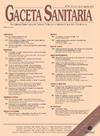国家卫生系统初级保健专业人员中倦怠的流行情况:系统审查和荟萃分析
IF 1.5
4区 医学
Q3 HEALTH CARE SCIENCES & SERVICES
引用次数: 0
摘要
目的分析国家卫生系统基层医护人员职业倦怠综合征的患病率。方法检索PubMed/MEDLINE、EMBASE、PsycINFO数据库(截止到2025年5月)。在西班牙进行的观察性研究报告了在初级保健工作的专业人员(如医生、护士、行政人员和其他人员)中职业倦怠的流行情况。从每项研究中提取方法学特征和结果,并对其质量进行评价。我们使用随机效应荟萃分析进行叙事综合来计算比例。协议注册:开放科学框架(https://osf.io/b2h4m/)。结果纳入39项研究,9204名受试者。对于主要结果测量,发现倦怠患病率为18% (95%CI: 13-24%; 25项研究;6310名参与者;I2 = 96.7%)。按专业分类,医生患病率为24% (95%CI: 16-32%),护士患病率为17% (95%CI: 6-32%),行政管理人员患病率为11% (95%CI: 2-27%),其他专业患病率为5% (95%CI: 0-16%)。根据使用的诊断标准发现差异:使用一维的医生患病率为52% (95%CI: 40-63%),护士患病率为44% (95%CI: 26-63%);医生占27% (95%CI: 20-34%),护士占18% (95%CI: 5-36%);在职业倦怠的三个维度上,医生占21% (95%CI: 13-31%),护士占12% (95%CI: 1-33%)。结论在国家卫生系统初级保健专业人员中,职业倦怠综合征的患病率较高,且随专业类别和诊断标准的不同而存在差异。似乎有必要促进个人和组织层面的行动,以减轻专业人员中与职业倦怠相关的负担。本文章由计算机程序翻译,如有差异,请以英文原文为准。
Prevalencia de burnout en profesionales de atención primaria del Sistema Nacional de Salud: revisión sistemática y metaanálisis
Objective
To analyze the prevalence of burnout syndrome in primary care professionals working in the National Health System.
Method
We searched PubMed/MEDLINE, EMBASE, and PsycINFO (up to May 2025). Observational studies conducted in Spain reporting the prevalence of burnout in professionals working in primary care (e.g., physicians, nurses, administrative staff and others) were included. From each study, methodological characteristics and results were extracted and their quality was evaluated. We performed a narrative synthesis with random effects meta-analysis to calculate proportions. Protocol registration: Open Science Framework (https://osf.io/b2h4m/).
Results
Thirty-nine studies with 9204 participants were included. For the primary outcome measure, a burnout prevalence of 18% (95%CI: 13-24%; 25 studies; 6310 participants; I2 = 96.7%) was found. By professional category, the prevalence rates were: 24% (95%CI: 16-32%) in physicians, 17% (95%CI: 6-32%) in nurses, 11% (95%CI: 2-27%) in administrative staff, and 5% (95%CI: 0-16%) in other professionals. Differences were found according to the diagnostic criterion used: a prevalence of 52% (95%CI: 40-63%) in physicians and 44% (95%CI: 26-63%) in nurses using one dimension; 27% (95% CI: 20-34%) in physicians and 18% (95%CI: 5-36%) in nurses for two dimensions; and 21% (95%CI: 13-31%) in physicians and 12% (95%CI: 1-33%) in nurses for three dimensions of burnout.
Conclusions
High prevalence of burnout syndrome was observed among primary care professionals working in the National Health System, with variations depending on professional category and diagnostic criteria. It seems necessary to promote actions at the individual and organizational levels to reduce the burden associated with burnout among professionals.
求助全文
通过发布文献求助,成功后即可免费获取论文全文。
去求助
来源期刊

Gaceta Sanitaria
医学-公共卫生、环境卫生与职业卫生
CiteScore
4.10
自引率
5.30%
发文量
80
审稿时长
29 days
期刊介绍:
Gaceta Sanitaria (Health Gazette) is an international journal that accepts articles in Spanish and in English. It is the official scientific journal of the Sociedad Española de Salud Publica y Administración Sanitaria (Spanish Society of Public Health and Health Administration) (SESPAS).
The Journal publishes 6 issues per year on different areas of Public Health and Health Administration, including:
-Applied epidemiology-
Health prevention and promotion-
Environmental health-
International health-
Management and assessment of policies and services-
Health technology assessments-
Health economics.
The editorial process is regulated by a peer review system. It publishes original works, reviews, opinion articles, field and methodology notes, protocols, letters to the editor, editorials, and debates.
 求助内容:
求助内容: 应助结果提醒方式:
应助结果提醒方式:


